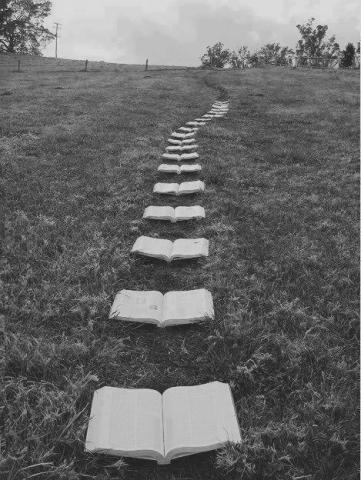Why does my blog matter?
Simple.
It matters because hip hop matters.
Hip Hop is one of the top music genres in America. The hip hop community encompasses music, fashion, art and much more yet it has only been around since the 1970’s, making it one of the fastest growing genres in America. Hip hop’s position in the music industry is currently changing. In the early 2000’s there was a significant decline in the sales of hip hop albums, mainly due to the pirating of hip hop music online. Despite this fact, many hip hop artists have been able to conquer the unfavorable climate in the music industry. There are hip hop artists who are still topping billboard charts and artists who are seeing growth in the area of digital album and single sales.
Although hip hop has had much success, it is still misunderstood and undervalued by many Americans. Many people dwell on the negative aspects of hip hop and fail to realize that hip hop is relevant and critical to boarder American culture and the political world. Since the 1970’s hip hop has become an icon for American culture, yet it’s significance is rarely seen in this way. And it’s not just your typical old white conservatives who criticize hip hop culture, there are also influential African Americans such as Bill Cosby and Oprah Winfrey, who have criticized hip hop for it’s misogyny and use of the n-word.
Though the hip hop community isn’t perfect, I believe that hip hop music is beautiful, lyrical, rhythmic, and expressive. I also believe that through hip hop music, and the artists who make this music, we have a lens into our cultural identity. I realize that not everyone will share the same love I have for the sound of hip hop music, but I yearn for the nation to appreciate the content of hip hop and how it can help us better understand who we are as a nation.
I created my blog because there is no place online that I’m aware of that discuses why hip hop matters to America and the positive influence hip hop has on important aspects of American culture. Sure there are blogs and websites that present the latest hip hop releases. And there are also websites and blogs that focus on the latest hip hop gossip. But there are few places online that analyze how hip hop artists are impacting and defining our culture through their music and lives.
“Let Hip Hop Ring” was created to explore how the hip hop community can help us understand hard topics such as violence, drugs, war, women and gender issues and gay rights from a different perspective. It was also created to explore hip hop in the context of other hot topics in America such as The POTUS, the presidential election, elected officials, Twitter, Facebook, YouTube, television, fashion, art, and other topics relevant today. Finally “Let Hip Hop Ring” was created so that Americans can realize that the hip hop community holds value; that it is not just a genre of music that promotes violence, drugs, and crime. My blog was created to explore the positive impact hip hop has on America. While my first dozen or so post did not get to cover every single topic I set out to cover, I hope to grow “Let Hip Hop Ring” into a community for intellectual and thought provoking conversations about how hip hop is central to American culture.
The original concept of my blog was to talk about how hip hop artists are intertwining their music and lives with politics. This came from a realization that hip hop is more political than most people see. Inspired by Tupac Shakur’s lyricism,
“The war on drugs is a war on you and me. And yet they say this is the Home of the Free, But if you ask me its all about hypocrisy The constitution, yo, it don’t apply to me, Lady Liberty still the b*tch lied to me”
I wanted to show that there are hip hop artists who care about a lot more than “fucking bitches and getting money.” I wanted my blog “to be entertaining, educational, and inspiring” and I planned to “break down walls, barriers, and stereotypes, to build a greater appreciation of the hip hop culture.” And pretty much… LET HIP HOP RING. But through my exploration in the realm of hip hop and politics, I realized that if we understand hip hop, we can better understand many other aspect of American culture.
In the last few months there have been many hip hop artists who have been battling the societal norms of both hip hop and of America. These battles have highlighted some of the obstacles that everyday Americans face.
If we understand artists like Frank Ocean we can understand the state of the homosexuality in America:
“[Frank] is the first major hip hop artist that I know of, to come out as bisexual. The hip hop community definitely had mixed feelings about his action…but I do think Frank has opened the doors to help change the way people think. I’m happy and excited that Frank Ocean is helping hip hop to become less homophobic. Hopefully because of him and other artists who will eventually follow his lead, it won’t matter who you love and write love songs about, as long as it is good hip hop music.”
Frank Ocean has cracked open the doors for homosexuality to be accepted in hip hop, however the doors are not completely open yet. If someone more mainstream such as Canadian rapper Drake came out of the closet tomorrow, I’m sure there would be backlash and outrage, but Frank HAS put his foot in the door. In America, there are gay people who are accepted in our society, such as Anderson Cooper, Elton John, Rosie O’Donnell and Ellen DeGeneres. But they are just beginning to be accepted for who they are. Just like in hip hop, homosexuals still have many challenges to face before their love is considered normal.
If we understand artists like Nicki Minaj, we can understand women’s issues in America. She may be known for having the biggest booty in hip hop, or having 58 different personalities, but she has definitely knocked down hip hop’s barrier for women. And has shown that women can be just as successful as men in any field in America. Nicki has also ushered in a new generation of female rappers including Azealia Banks, Brianna Perry and Angel Haze. Through her album sales and by becoming a household name, she has proven that females can achieve ultimate success in male dominated fields. Her success was proven a few months ago when the POTUS took the time to comment on one of her songs:
“Nick Minaj is arguably the hottest female rapper out and is known for her multiple eccentric personalities…On Lil Wayne’s recent mixtape, Minaj raps, “I’m a Republican voting for Mitt Romney, You lazy b*tches is f*cking up the economy.”… The President himself commented on these lyrics during a radio interview. He talked about how he knows that “she likes to play different characters” in her songs. Minaj responded to the president on twitter saying, “Ha! Thank you for understanding my creative humor & sarcasm Mr. President, the smart ones always do… *sends love & support.” So the President can rest assured knowing that he will probably get her vote.”
Hip Hop is becoming a more female friendly genre, one female rapper at a time, just as other historically male dominated fields in America are becoming more welcoming to females, such as politics. Hilary Clinton and Sarah Palin helped break down barriers for women in politics during the 2008 election. Because of their example and because of the desire of many women to become more equal to men, there has been a rise in female members in congress. And let’s not forget that the female vote ultimately helped keep Barack Obama in office. Women are making strides in every aspect of America life, but as we see hip hop:
Nicki Minaj is the only female household name in rap today
And as we see in politics:
Women make up only 17% of congress, but half of the population of the United States
Women still have a ways to go before we are on the same playing field as men.
If we understand hip hop we can understand how both hip hop artists and the American government are failing minorities when it comes to the war on drugs:
“Minorities, especially blacks and Hispanics, are affected by marijuana related arrests more than any other race. As members of the hip hop community, we should want marijuana to be legal to get black men out of prison and to keep young black men from going to prison; not just so we can get high whenever and wherever we want. Hip Hop artists should not only rap about the great feeling they get when they are high but also about how marijuana is hurting the black community. Too often the hip hop community glamorizes the use of marijuana and forgets the dark side that has lead so many men and women in prison.”
Hip hop artists smoke, write songs about it, (sometimes) get arrested, make bail, and then go on with their lives. Young black men listen to hip hop music about marijuana, smoke marijuana, get arrested and land in jail for a long time. People in the hip hop community have taken steps to legalize marijuana, but for the wrong reasons. Hip hop is currently causing as much harm to young African Americans as the law is. If the hip hop artists want marijuana laws to change, they must also change and stand up for the rights of their young black listeners. They must use their power to convey messages, to show how bad the war on drugs is hurting the black community.
Not only do many Americans neglect the lens hip hop creates into our culture, but many Americans also undervalue the positive power hip hop music can have. Though there are naysayers such as Cosby and Winfrey, three of the most influential African Americans in America, Barack Obama, Michelle Obama, and Cory Booker, realize that hip hop does have valuable qualities.
Hip Hop is thought of as a divisive culture, although it is actually very unifying. The love of hip hop created an unusual bond between two of the most powerful couples in America: Barack and Michelle Obama and Beyoncé and Jay-Z Carter.
“Jay Z and President Obama have a great friendship and are constantly supporting one another. Jay Z has recently appeared on an Obama ad. Jay Z may be one of the hardest working rappers campaigning for Obama. Jay Z and his wife Beyoncé hosted an event brining in an estimated 4 million dollars for the campaign. Jay Z, who strongly supported President Obama in the 2008 election, is still a strong supporter after four years.”
Barack Obama has met with hip hop heavy hitters, Jay Z and Kanye West, to explore how hip hop can be used to engage young people in topics such as education and incarceration. To Barack Obama, “hip hop is not just a mirror of what is, it should also be a reflection of what can be.” He pushes the lens metaphor even further than I did. He sees that hip hop can help change and better our nation, because of the influence so many hip hop artists have. Michelle Obama has also used hip hop to empower others. She teamed up with Beyoncé for her “Let’s Move” campaign. The music video they created uses Beyoncé’s music to inspire children to live a healthy lifestyle.
Hip hop music is also loved and respected by Newark Mayor Cory Booker:
“Many people have suggested that Cory Booker could be the next black president (although he’s denied any interest in being president, his main goal being making Newark a better place). But like our current president, he’s obviously a fan of Jay Z and hip hop. In an interview with All Hip Hop, Mayor Booker says he loves Queen Latifah, Eminem, Jay Z, Common, Tupac, Biggie, and Run DMC. Mayor Booker says that “music is a great unifier: it bridges racial, religious and cultural divides and actually unifies a people.” And I couldn’t agree with him more!”
The President, First Lady, and Cory Booker’s endorsement of hip hop should signify that there is value in this culture. I believe if these three people of power can find meaning and relevance in hip hop, anyone can.
So yes, hip hop is great and all, it can help us understand who we are and what we believe in, and it can also have a great impact on our society, but I would be blind and dumb to not acknowledge the fact that hip hop CAN have a negative impact on our youth. The commercialization of this type of “ignorant” hip hop as many people call it, is what’s effecting the youth.
If you listen to any hip hop radio station in America, you’re bound to hear multiple songs about
Strippers
(2 Chainz – I Luv Dem Strippers ft. Nicki Minaj) http://www.youtube.com/watch?v=atHekn9KE18
(Dance Like a Stripper – M.E)
http://www.youtube.com/watch?v=fm6KNGS4lZM
Drugs
(Gucci Mane – Bricks)
http://www.youtube.com/watch?v=bIS8twlzuMw
(Kid Cudi – Marijuana)
http://www.youtube.com/watch?v=pXxwxEb3akc
Violence
(Chief Keef – I Don’t Like (feat.) Lil Reese)
http://www.youtube.com/watch?v=2WcRXJ4piHg
(Yo Gotti – Bulletproof)
http://www.youtube.com/watch?v=KYgcHrEUuDs
And just plain Bullshit
(Chief Keef – Love Sosa)
http://www.youtube.com/watch?v=XoQ21CuDJZY
(Trinidad James – All Gold Everything)
http://www.youtube.com/watch?v=mpHezCd1ZnM
Ok, hip hop definitely has its flaws. While these songs are fun to listen to and dance along to at parties, there is so much more to learn from hip hop. Violence, drugs, money and sex are all apart of the street life that many hip hop artists come from. But no one focuses on how some artists are using hip hop to over come the streets they were born into. On Kendrick Lamar’s latest album, good kid, m.A.A.d city he explains that in the midst of violence and crime in this city, rapping was his only escape,
Park the car and we start rhyming ya bish,
The only thing we had to free our mind.
– Money Trees, Kendrick Lamar
Hip Hop is an outlet of creative expression for many minority and lower class kids. Hip hop was the only light at the end of a very dark tunnel for many artists who are successful today.
“From standing on the corners boppin’
To driving some of the hottest cars New York has ever seen
For dropping some of the hottest verses rap has ever heard…
I flow for those ‘dro’ed out; all my niggas
Locked down in the ten by four, controlling the house…
“I flow for chicks wishin’, they ain’t have to strip to pay tuition”
– Hard Knock Life, Jay Z
“You either working or you slanging cocaine on my block
You had to hustle, cause that’s how we was raised on my block
And you stayed on your hop until you made you a knot
On yo’ block you prolly bred a Fat Pat or 2Pac
Or Big Pun, or B.I., ya homeboys from knee-high”
– On My Block, Scarface
“In the hood selling CDs cause they showed love at the Mom & Pops
‘Til I sold em all even when my buzz was small and still chose to cop
Fact remains that I’m still the same and I’ll never change or settle
Cause I ain’t tripping on mainstream cause love from the underground, that’s forever”
– 4EvaNaDay Theme, Big Krit
“He said: “I write what I see
Write to make it right, don’t like where I be
I’d like to make it like the sights on TV
Quite the great life, so nice and easy
See: now you can still die from that
But it’s better than not being alive from straps”
– Hip Hop Saved My Life, Lupe Fiasco
In all of these examples, the artists had hard lives, and many were forced to do illegal things to survive. Hip hop literally saved their lives. The goal of my goal is to celebrate hip hop for all of the good it is doing, but also examine it to try to prevent the harm it could cause.
To me, the future of “Let Hip Hop Ring” seems bright. I think that I can make the case for hip hop to people who don’t understand or undervalue it because I’m on the outskirts of hip hop as well. Coming from the suburbs, I definitely can’t relate to the perils of ‘gangster rap’ and being a female, some of the misogynistic lyrics are off putting to me, but I believe there is much more to learn from hip hop. Everyday I see something new to I could write about. I want to incorporate more media aspects into my blog, since it is a blog about music, I think videos, music clips, album covers, and more will add to the content of the site. And I want my blog to be a community where other people can write and comment about what they have learned from hip hop. If “Let Hip Hop Ring” can change one person’s perspective on hip hop or help some one see hip hop as a genre that has more to offer than violent, derogatory music, I will consider it a success.


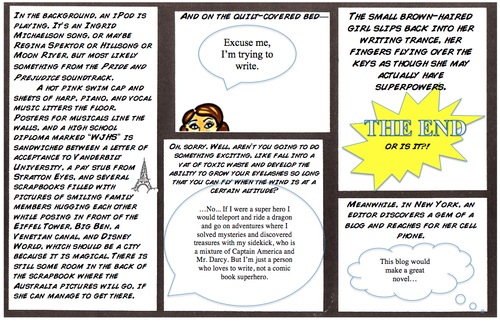

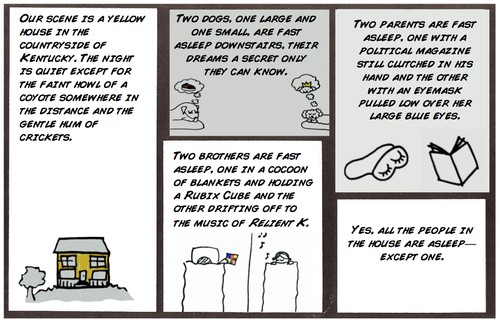
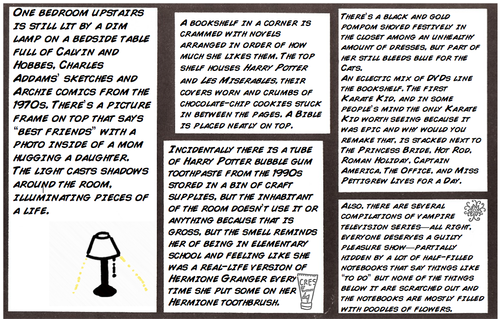

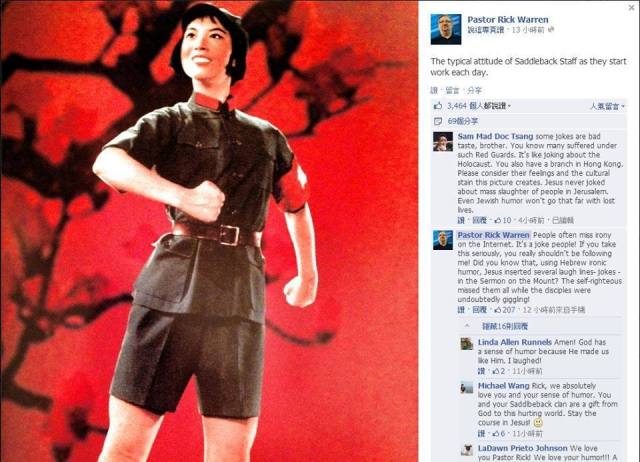


 Adkins’ grassroots approach to sustainability may be new to Nashville’s campuses of higher learning, but he’s not alone in his commitment to reshaping the city’s use of agriculture. Josh Corlew, manager of the Urban Agriculture program at volunteer-mobilizer
Adkins’ grassroots approach to sustainability may be new to Nashville’s campuses of higher learning, but he’s not alone in his commitment to reshaping the city’s use of agriculture. Josh Corlew, manager of the Urban Agriculture program at volunteer-mobilizer 

